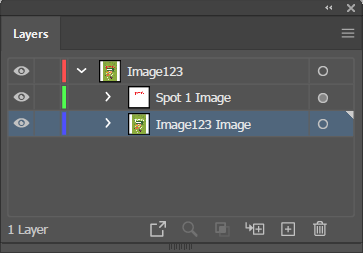

This section explains how to prepare images that include spot data with raster-based image editing applications such as Adobe Photoshop. In order to print with white ink, you must have an ONYX profile (media model) properly configured for the use of spot data. To add spot color data to your image in Photoshop, you need to create a layer within the image as a new spot channel. It is possible to have more than one spot element in an image, but each element must be on the same spot channel, and therefore have the same opacity level, or else ONYX Thrive will treat the saved document as a separation file. Since the Arizona printers with white ink support two spot channels, you can create one spot channel for Spot 1 data and another for Spot 2 data. CMYK is the preferred image mode as the actions required for spot data creation are simpler than those for RGB.
You can use raster-based image editing applications other than Photoshop as long as it has the ability to create spot channels.
When you have a raster-based image and need to have select areas of that image show up as white when the media is non-white or clear or translucent, you can prepare a spot channel for the white data in Photoshop.
The first step in the white ink workflow is to prepare your source image to use a spot ink channel. The spot data must be designed entirely on a separate spot channel to be recognized by the ONYX RIP. The name you assign to this spot channel layer must be Spot 1 or Spot 2 and is the most important part of preparing the file. This named channel allows RIP-Queue to determine that the data in the source image needs to be output to the spot channel. In preparing your file, only you can define what you want to print with "white ink" as part of your design and assign the color as described in this document. Using your graphic application program, the spot data can be simple or complex and can range from vector shapes and text to halftone bitmap images.
Use the following steps to create a new spot channel layer:
The image file used in this example is for illustration purposes only. For best results when working with text, we recommend that you use a vector-based program such as Adobe Illustrator.
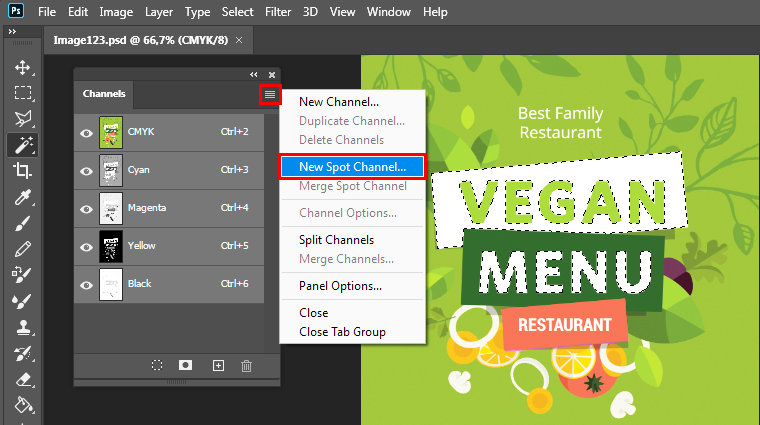 Add Spot Channel
Add Spot ChannelName – Enter the name “Spot 1” or "Spot 2". This name is specifically reserved in RIP-Queue for this type of workflow, using any other name requires more steps to make spot information addressed by the Rip software.
Note: For instructions on how to use a naming convention other than Spot 1 or Spot 2, refer to How to Name Your Spot Data
Solidity – Set the solidity to 10%
Edit the channel Color by double-clicking on the swatch. Set the spot color to a color similar to the spot ink in your printer. Since white can be hard to distinguish, this color can be any value that will help you see the design better.
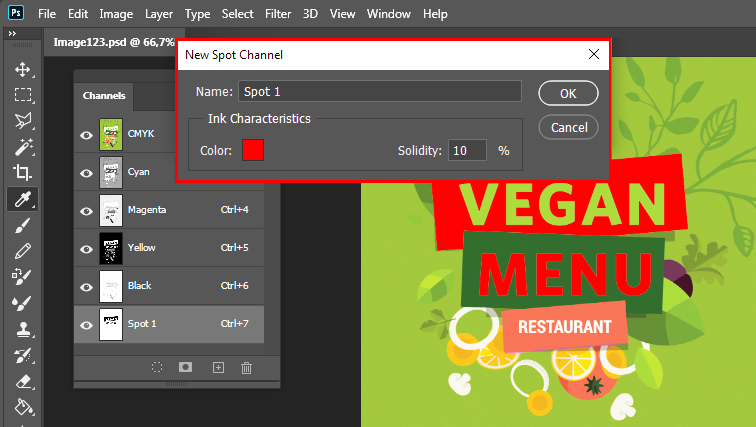
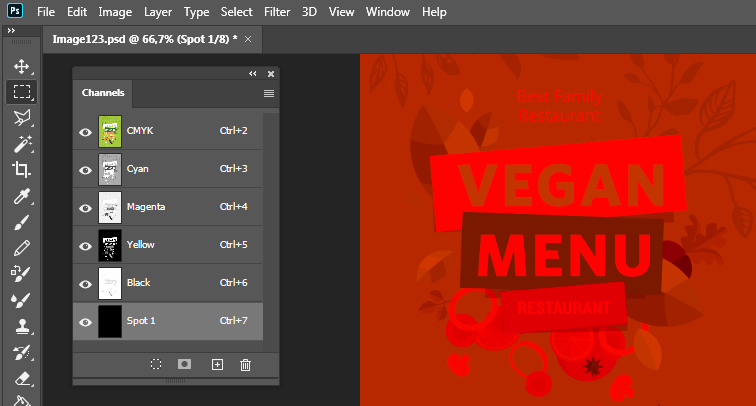
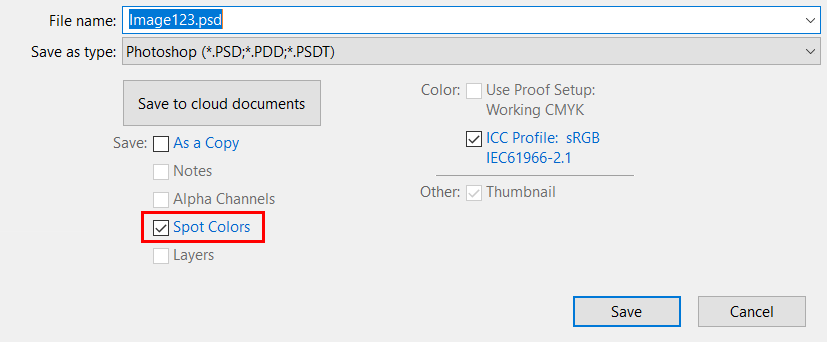 Save with Spot Option
Save with Spot OptionIf you intend to use this file in a vector-based program such as Illustrator, save it as a .PSD file in order for all channel information to be carried over. The white spot color is printed in the order it appears in the Channels palette, with the spot channel printing underneath CMYK data.
When exported as a .PSD to Illustrator, this data will appear above the image data. This is the correct format protocol for Illustrator. Do not forget to embed the image after you imported it.
